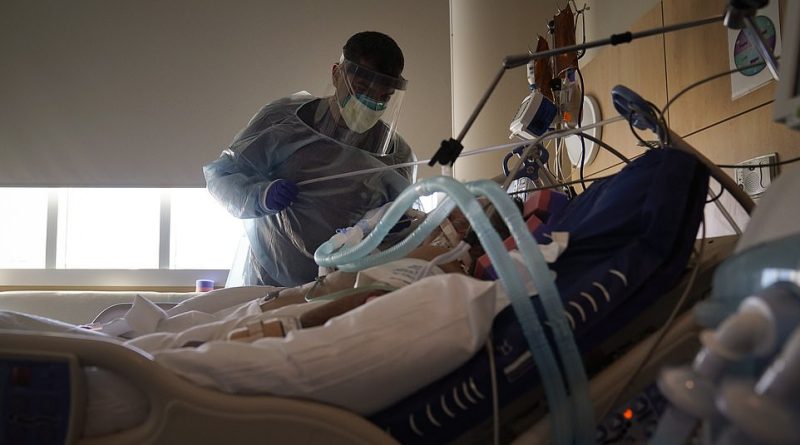US sets another record for COVID hospitalizations with 128K
The US set a new record for coronavirus hospitalizations for the sixth time in the last week on Monday with 128,210 as experts warn that the worst of the crisis is yet to come.
The seven-day average for hospitalizations nationwide now stands at a record-high 125,387, according to COVID Tracking Project, which reported 177,669 new cases and 1,545 new deaths on Monday.
The situation in hard-hit Los Angeles County has grown even more critical in recent days, as hospitals ramp up efforts to ration care amid a more than 1,000 percent spike in admissions since early November.
Ambulance crews in the county are now being advised to conserve oxygen and not to transport patients who have virtually no chance of survival to the hospital because resources need to be reserved for those with better prognoses.
The conservation measures come as hospitals in Southern California and around the US are expected to become increasingly overwhelmed in the coming weeks as infection surges fueled by holiday travel and gatherings come to fruition.
The US has seen 19 days with over 200,000 new coronavirus cases since Thanksgiving, according to a DailyMail.com analysis of data from Johns Hopkins University. In the same period there were 23 days with over 2,000 deaths and 10 days with over 3,000.
Over the last week, the country has seen an average of one COVID-19-related-death every 33 seconds, according to a CNN analysis.
The death toll, which currently stands at about 352,600, could be closer to half a million, according to the latest figures from the Centers for Disease Control and Prevention.
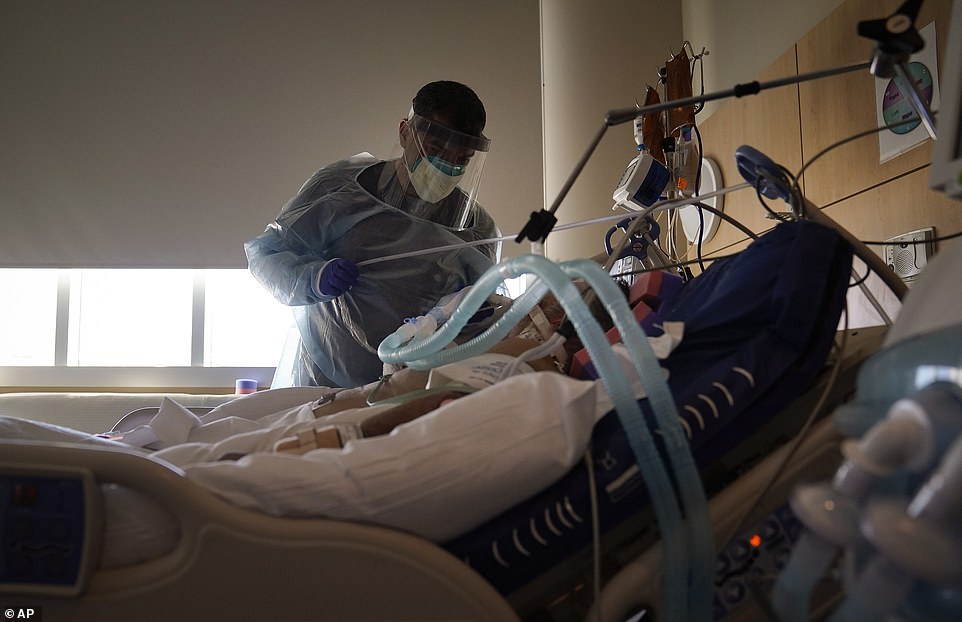
The US set a new record for coronavirus hospitalizations for the sixth time in the last week on Monday with 128,210. Pictured: Dr Mher Onanyan tends to a COVID-19 patient at Providence Holy Cross Medical Center in Los Angeles
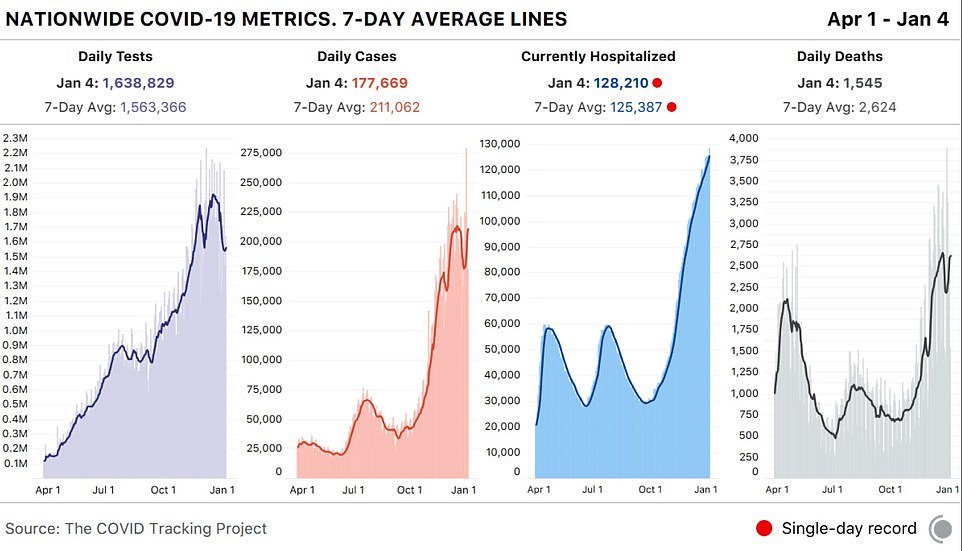
The seven-day average for hospitalizations nationwide now stands at a record-high 125,387, according to COVID Tracking Project, which reported 177,669 new cases and 1,545 new deaths on Monday
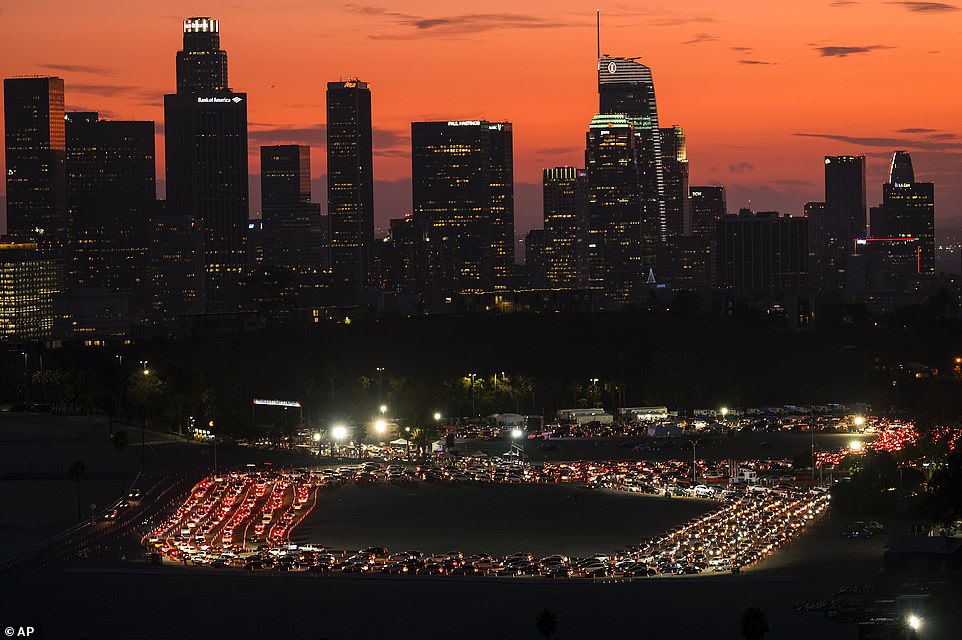
The situation in hard-hit Los Angeles County has grown even more critical in recent days, as hospitals ramp up efforts to ration care amid a more than 1,000 percent spike in admissions since early November. Pictured: Thousands of cars wait in line for coronavirus tests at Dodger Stadium on Monday
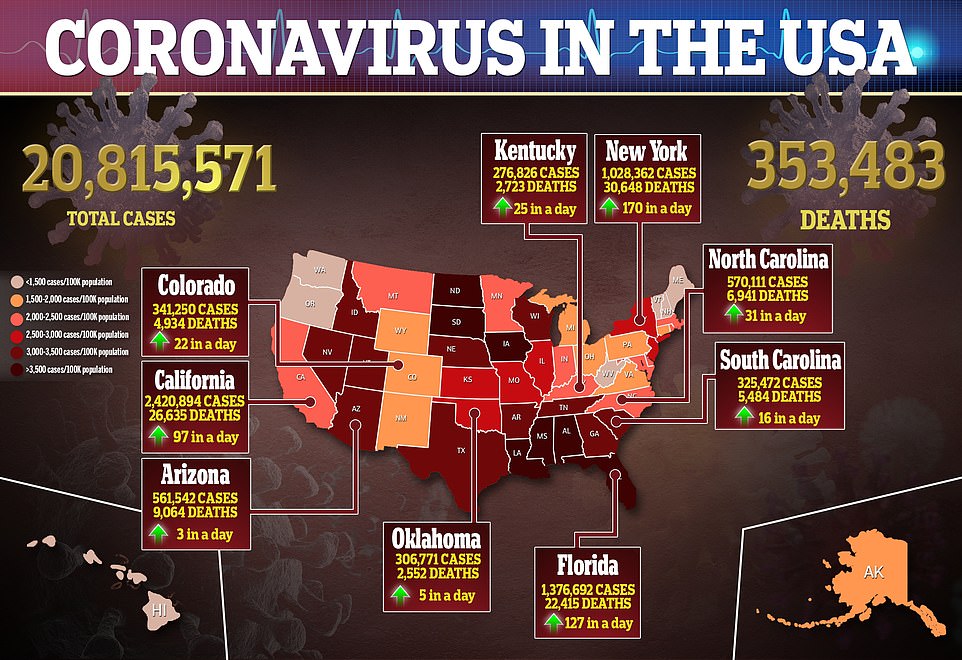
The US has seen 19 days with over 200,000 new coronavirus cases since Thanksgiving, according to a DailyMail.com analysis of data from Johns Hopkins. In the same period there were 23 days with over 2,000 deaths and 10 days with over 3,000
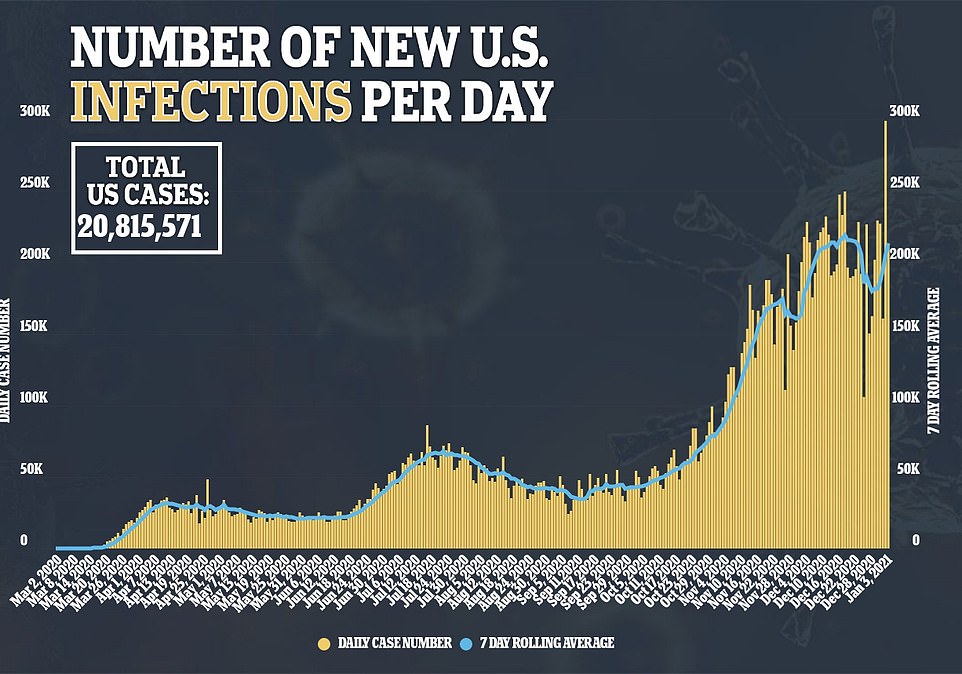
Hospitals around the US are expected to become increasingly overwhelmed in the coming weeks as infection surges fueled by holiday travel and gatherings come to fruition
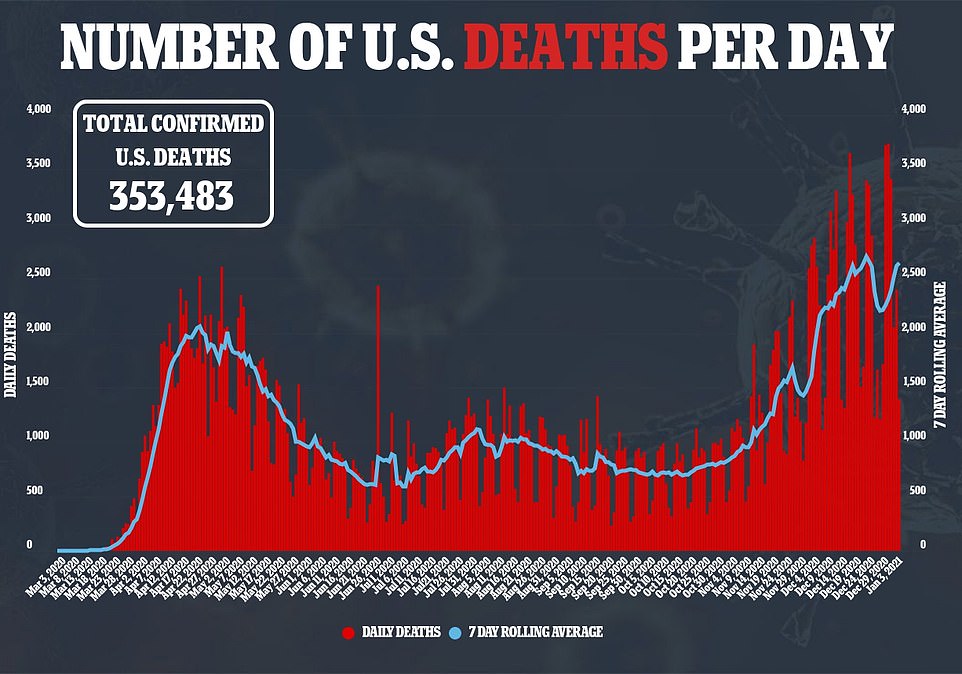
The death toll, which currently stands at about 353,483, could be closer to half a million, according to the latest figures from the Centers for Disease Control and Prevention
The health crisis continues to be especially dire in California, which reported 29,633 cases, 97 deaths and 22,003 hospitalizations on Monday.
Nearly 80 percent of the state’s latest deaths came from Los Angeles County, where 77 were reported on Monday, bringing the total to date to 10,850.
The county, the nation’s most populous with a quarter of California’s 40 million residents, has seen a 700 percent increase in COVID-19 deaths since the beginning of November, public health director Barbara Ferrer said Monday.
‘Another way to look at this is, we’re losing, on average, a person every 15 minutes here in LA County,’ Ferrer said. ‘We may very well be on our way to weekly death tolls of a thousand people or more.’
The spike in deaths is directly linked to a spike in hospitalizations, which have grown by more than 1,000 percent in the last two months to 7,697 as of Monday, with one fifth of patients in the ICU.
In light of the ongoing surge hospitals in the county have been rapidly discharging sick patients who under normal circumstances would be allowed to stay longer for observation.
Officials fear the situation will worsen significantly in the coming days, with the flood of new patients threatening to outpace hospitals’ ability to discharge less critical patients.
Resources are also wearing thin, prompting the LA County Emergency Medical Services Agency to issue a directive on Monday stating that ambulance crews should ration oxygen by only administering it to patients with levels below 90 percent.
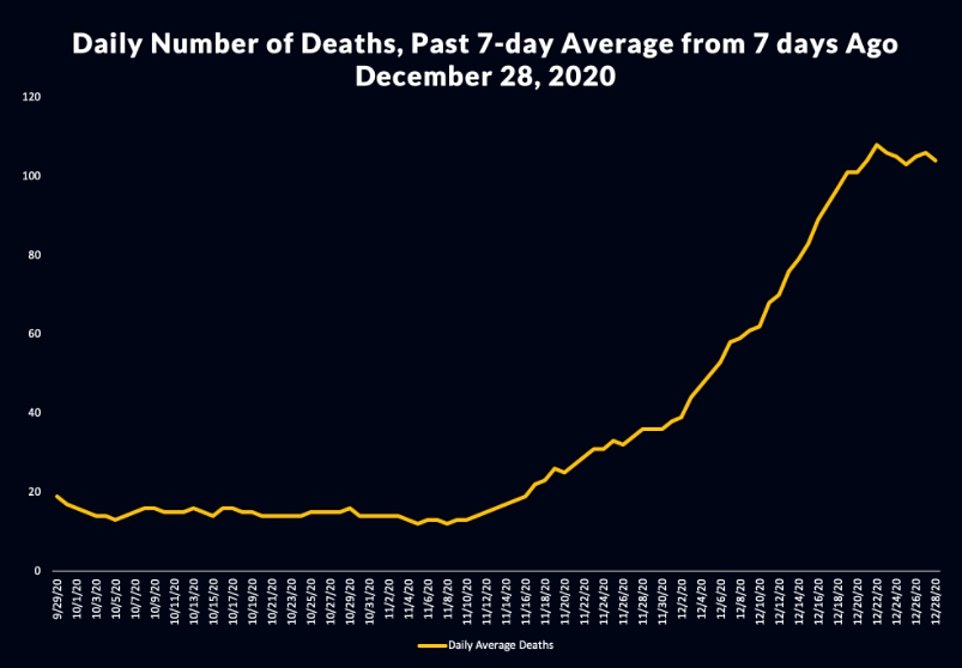
Los Angeles County, the nation’s most populous with a quarter of California’s 40 million residents, has seen a 700 percent increase in COVID-19 deaths since the beginning of November, public health director Barbara Ferrer said Monday
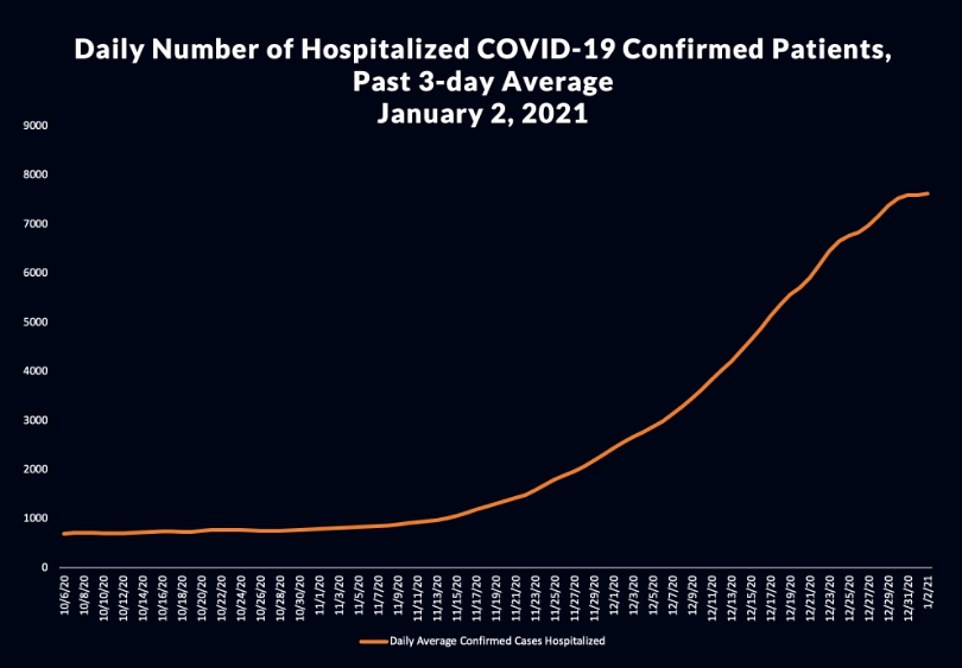
The spike in deaths is directly linked to a spike in hospitalizations, which have grown by more than 1,000 percent in the last two months to 7,697 as of Monday, with one fifth of patients in the ICU
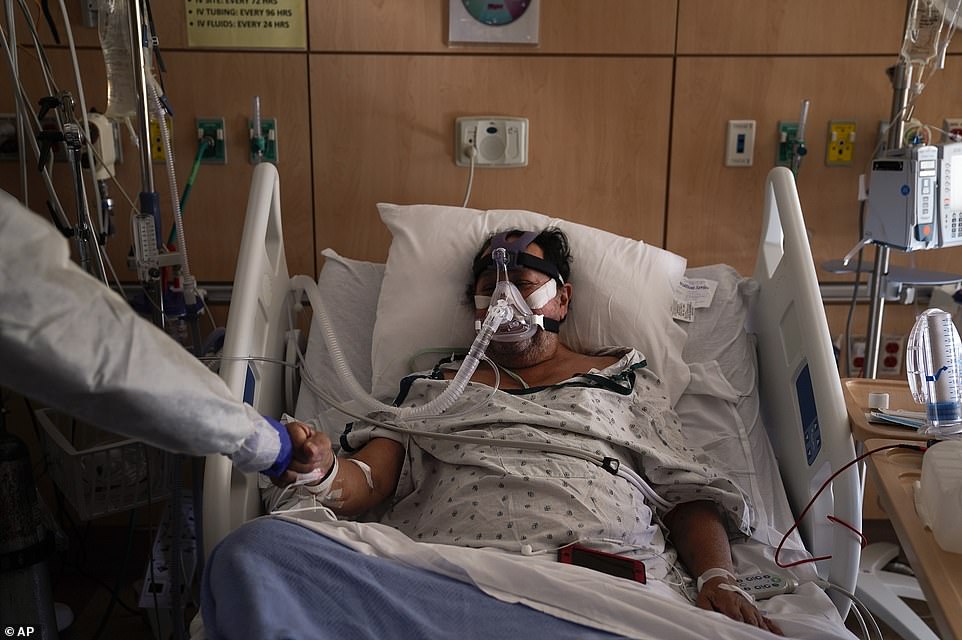
COVID-19 patient Efrain Molina, center, gets a fist bump from nurse leader Edgar Ramirez at Providence Holy Cross Medical Center in the Mission Hills section of Los Angeles
Other parts of California are expected to take similar measures soon as the entire Southern California region grapples with zero percent available ICU capacity.
One of the largest hospitals in San Bernardino County, Arrowhead Regional Medical Center, reached capacity two weeks ago and is now housing patients in a field hospital.
‘We knew there was [another] wave coming in the wintertime,’ Dr Louis Tran told the LA Times this week.
‘But I did not expect to have as many sick people who required ICU care like we’ve been having.’
With its field hospital nearly full, Arrowhead is now setting up 12 more rooms inside trailers, and is prepared to convert conference rooms inside the main building if those trailers fill up as well.
‘If worse comes to worst with our planning, then we’ll use the cafeteria,’ clinical director Ravneet Mann told the Times.
‘We can go to the lobby also.’
In Arrowhead’s ICU units, patient demographics have shifted with the surge, Mann said.
‘They’re coming in younger and coming in sicker,’ she said.
Adding to California’s concerns is the emergence of a new mutant strain of coronavirus that is said to be 70 percent more transmissible than the original.
Governor Gavin Newsom announced on Monday that the state has now detected six cases of the strain, four in San Diego and two in San Bernardino.
The news came as New York reported its first case of the strain, which was first detected in the United Kingdom and has now been f
ound in four states, including Colorado and Florida.
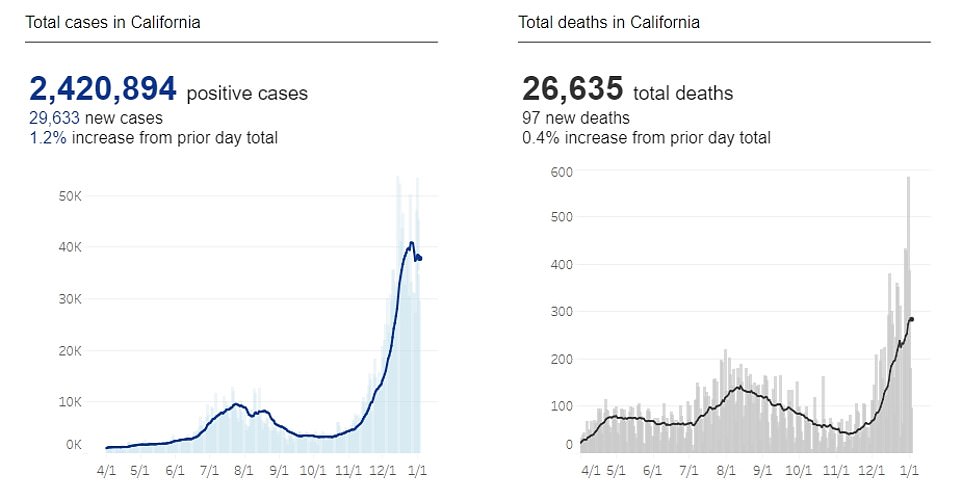
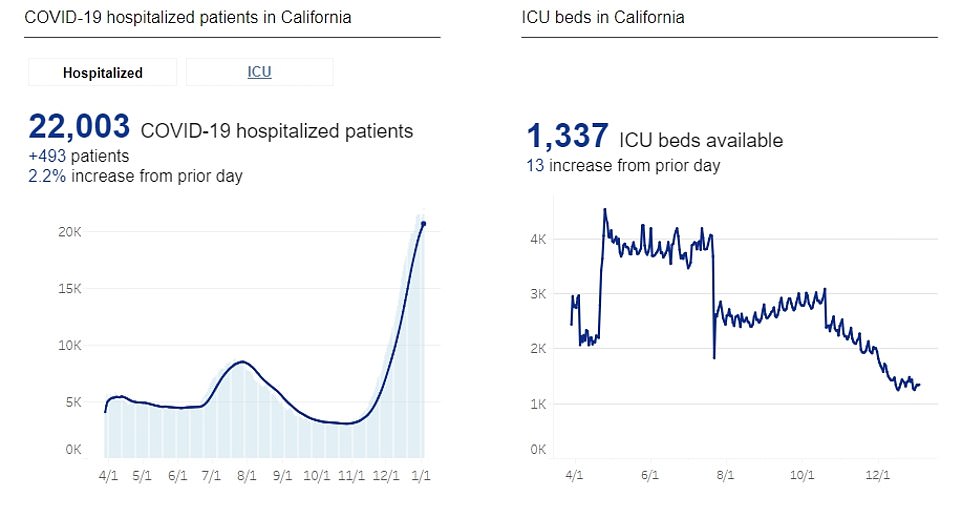
The health crisis continues to be especially dire in California, which reported 29,633 cases, 97 deaths and 22,003 hospitalizations on Monday
Gov Newsom also raised alarm about the pace of coronavirus immunizations in his state on Monday. Only about one percent of residents – 454,000 – had been vaccinated thus far, he said, adding that that figure is ‘not good enough’.
California is not alone in experiencing hiccups with the vaccine rollout. Across the US the pace of immunizations has been far slower than originally planned.
The CDC on Monday announced that less than 4.6 million shots have been administered – well below the 20 million-target officials had set for the end of 2020.
But Secretary of Health and Human Services (HHS) Alex Azar claimed the administration’s goal was have to 20 million first doses available, not 20 million people immunized, which directly contradicts comments made by health experts tied to the White House.
He also said he was ‘surprised there haven’t been more glitches’ during the rollout, telling Good Morning America: ‘This is just – it’s normal.’
Azar’s comments came as new data from the CDC suggested that the true US death toll could be approaching 500,000.
That’s because the nation is waiting for new ‘excess death’ figures from the holiday season. Excess deaths are defined as over and above the number of people who would have died anyway – the typical mortality rate of a population.
According to the latest available numbers from the CDC, 456,580 more people than expected have died since the start of the pandemic.
However, that number only include deaths counted until the week ending on December 26. Since then, more than 19,730 people have lost their lives to COVID-19.
With excess deaths around 20 percent higher than average, that means the death toll is likely undercounted by about 4,000. This means excess deaths could sit at more than 480,000.
The high number of excess deaths might be due to the added risk of coronavirus in people with pre-existing conditions, such as diabetes and high-blood pressure.
Additionally, due to social distancing measures and the increasing demand place on hospitals, people may have delayed seeking life-saving medical care.
Deaths not linked to the virus may be from other pathogens circulating during the 2020-21 flu season.

